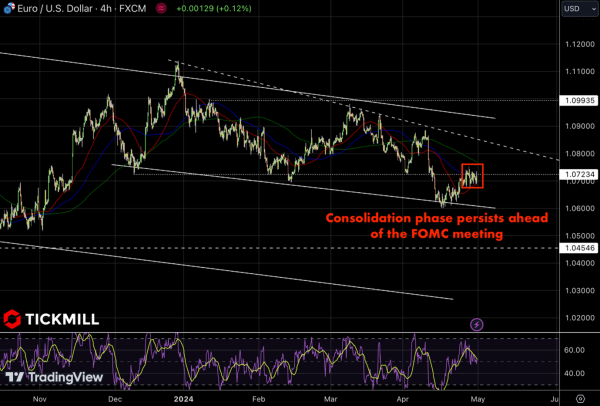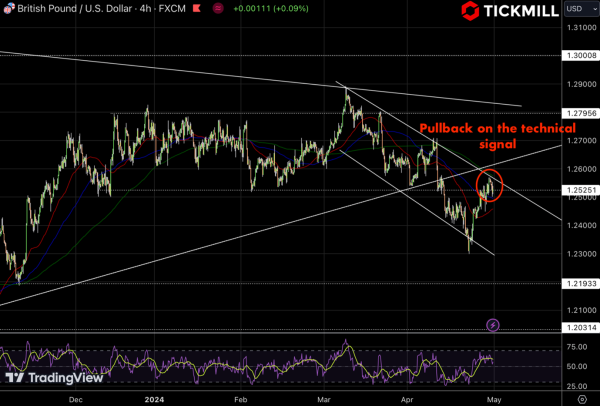Euro Succumbs to Dollar Might Amidst Strong US Data and Fed Status-Quo Speculations
In Tuesday’s early New York session, the EUR/USD pair took a downward spiral, relinquishing its intraday gains and descending to the pivotal support level of 1.0700. Despite a surge in positive Eurozone data, the Euro found itself unable to maintain its momentum against the US Dollar, largely due to the formidable figures released by the United States Bureau of Labor Statistics:

The BLS delivered a robust growth report for the first quarter Employment Cost Index, showcasing a resilient 1.2% increase compared to the anticipated 1.0%, surpassing both forecasts and the previous reading of 0.9%. This surge in wage growth ignited concerns over persistent inflationary pressures in the US economy. As wages climb, so does household spending, which inevitably drives up prices, potentially exacerbating inflationary trends.
On the Eurozone front, preliminary April inflation data and first-quarter Gross Domestic Product figures exceeded market expectations. While the Harmonized Index of Consumer Prices (HICP) showed steady growth meeting estimates, the core HCPI, excluding volatile food and energy prices, experienced a slight softening.
Despite the positive economic indicators, the ECB maintained its Main Refinancing Operations Rate at historically high levels of 4.5%, underscoring the divergence in monetary policies between the Eurozone and the US.
The Euro's inability to sustain its gains post-release of key economic data underscores investors' steadfast confidence in the likelihood of ECB interest rate cuts commencing in June. Speculation surrounding this move remains fervent, with a majority of ECB policymakers signaling their support for a rate-cut initiative, potentially extending into subsequent meetings throughout the year.
Meanwhile, the US Dollar Index staged a rebound, approaching the 106.00 mark, driven by expectations of a hawkish stance from the Federal Reserve. Ahead of the Fed policy announcement, market participants eagerly await crucial data releases such as the ADP Employment Change and the ISM Manufacturing Purchasing Managers Index (PMI) for April, with private employment figures forecast to marginally decrease from the previous reading.
The Pound Sterling retreated from a recent two-week peak of 1.2570 against the US Dollar but managed to maintain its position above the psychological support level of 1.2500. GBP/USD dynamics were influenced by anticipation surrounding the upcoming Fed monetary policy announcement, with investors eagerly awaiting fresh guidance:

With a relatively light economic calendar in the United Kingdom, market sentiment regarding the Bank of England’s (BoE) interest rate policy on May 9 is expected to guide the Pound Sterling's trajectory. Despite expectations for status quo maintenance, sentiments lean towards a slightly dovish stance on interest rates, as indicated by statements from BoE Governor Andrew Bailey and Deputy Governor Dave Ramsden.
Looking ahead, all eyes remain firmly fixed on the Federal Reserve’s interest rate decision scheduled for Wednesday. Investors will closely scrutinize the interest rate guidance amid expectations of a vote to maintain rates within the 5.25%-5.50% range.